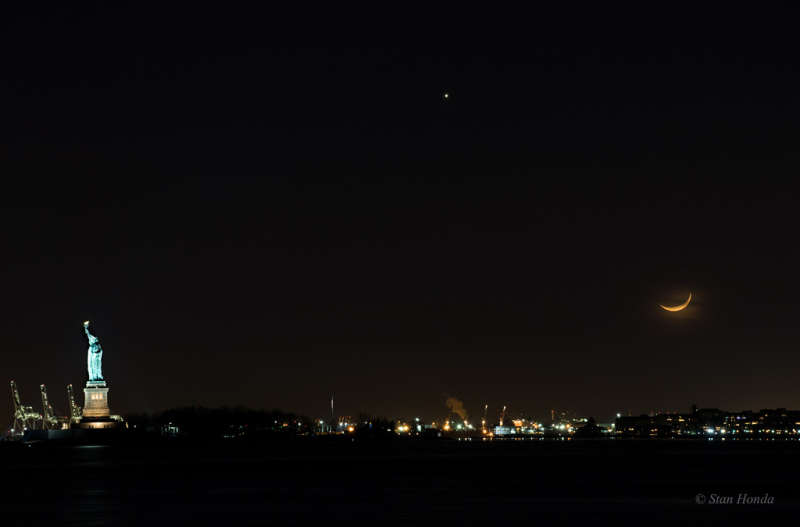
|
Credit & Copyright: Stan Honda
Explanation:
Moonset on January 1 is captured in this sea and night sky snapshot
from the port city of New York.
Its warm moonlight shining through haze and thin clouds,
this New Year's Moon was about 3 days old, in a waxing
crescent phase.
The visible lunar disk is about 10 percent illuminated.
Also easy to spot in hazy urban skies,
Venus blazes forth over
the western horizon, begining the year as Earth's evening star.
Like the Moon, Venus goes
through a range of phases as seen from planet Earth.
As the year began, telescopic views of the brilliant inner planet's disk
would show it about 50 percent illuminated, growing into a larger but
thinner crescent by early March.
New York Harbor's
welcoming beacon, the Statue of Liberty, anchors a terrestrial
corner of the night's triangle at the far left.
APOD Lecture Tonight:
Amateur Astronomers Association of New York City
|
January February March April May June July August September October November December |
| |||||||||||||||||||||||||||||||||||||||||||||||||||||||
NASA Web Site Statements, Warnings, and Disclaimers
NASA Official: Jay Norris. Specific rights apply.
A service of: LHEA at NASA / GSFC
& Michigan Tech. U.
Based on Astronomy Picture
Of the Day
Publications with keywords: Moon - Venus
Publications with words: Moon - Venus
See also:
- APOD: 2025 August 23 Á Fishing for the Moon
- APOD: 2025 July 20 Á Lunar Nearside
- APOD: 2025 June 28 Á Lunar Farside
- APOD: 2025 June 20 Á Major Lunar Standstill 2024 2025
- APOD: 2025 June 18 Á Space Station Silhouette on the Moon
- APOD: 2025 May 11 Á The Surface of Venus from Venera 14
- APOD: 2025 April 22 Á Terminator Moon: A Moonscape of Shadows
